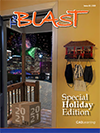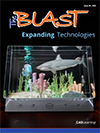
Archive
Subscribe
Sign Up

How to be More Productive
As soon as we stop measuring the success of training programs by how many hours people attend, the sooner we can begin to focus on tasks, competencies, and outcomes that drive better designs. For experienced designers, it’s all about reducing the time it takes to find the answer. Performance adjacent support means meeting the needs of the full spectrum of learner proficiency and point of need, based on proven and known competencies for job or project outcomes. Give the employee the answer immediately at the point of need and nothing more than the answer.
How to Use AutoCAD Sheet Sets
Regardless of what you design, sheet sets enable you to efficiently create, manage, and share your entire set of drawing sheets from one convenient location.
The first step in implementing sheet set functionality is to create a sheet set. You can create a sheet set using an example sheet set or by simply importing existing drawing layouts as sheets. In order to create a new sheet set based on existing drawings, those drawings must use layouts. This process does not alter those drawings. It simply creates a sheet set file—a file with a .dst file extension—which includes pointers to those drawing files.
To create a sheet set, you must first open the Sheet Set Manager. Therefore, open the Sheet Set Manager if it is not already open. In the Sheet Set Manager palette, expand the drop-down in the upper-left and choose New Sheet Set…. Or, in the Application Menu, choose New > Sheet Set. Either of these actions opens the Create Sheet Set wizard, which will step you through the process of creating a new sheet set.
How to Use OSL Shaders in Your Renders
OSL, or Open Shading Language, developed by Sony Pictures Imageworks, is an open source shading language that allows you to create programmable shaders in advanced renderers like Arnold. The implementation of OSL in 3ds Max is done using both an OSL map and independent OSL textures.
One of the benefits of using OSL is that writing shaders for it is simpler than working with other methods like C++. Another advantage to OSL is that you can find hundreds of shaders available online through various repositories. Searching for “OSL shader download” will turn up several locations where you can download OSL shaders that can be used along with the OSL map.
The OSL implementation within 3ds Max is available when using both the Arnold renderer and the Nitrous based Quicksilver renderer in 3ds Max 2020. Note that you must be using 3ds Max 2016 or newer with Arnold 5.0 or newer. Also make sure you have the latest version of the MAXtoA plug-in for 3ds Max. The version number can be found on the Arnold Renderer tab in the Render Setup dialog.
How to Perform a Revit Systems Analysis
Revit provides systems analysis tools that can help users choose the right HVAC system from the start of the design. Conceptual, analytical, or detailed designs all follow the same five-step workflow:
1. Add Analytical Systems: Start by adding zone equipment, air systems, and water/refrigerant loops in the Analytical Systems System Browser.
2. Add System-Zones: Sketch in lines or shapes to specify the rooms and spaces that will be served by that equipment. Then, in the Project Browser, assign the specific zone equipment that will be servicing each zone.
3. Assign Analytical Spaces: Add spaces using the Assign Spaces Automatically option. Create an Energy Model, and it will automatically create the Analytical Spaces and assign the zone equipment you specified.
4. Modify Analytical Spaces: Assign Space Types to all the spaces. Go through each space and assign what it will be used for, in order to create a realistic simulation of the entire HVAC systems behavior.
5. Run Systems Analysis: Click Run Systems Analysis to start analyzing your system!
Issue 64 Increasing Output
-
The 5 Biggest Mistakes for Driving Outcome-Based Learning By Matt Murphy
-
Studying Productivity By David Cohn
-
The Productive Plongeur By Ash Lounsbury
-
Organizing Design Content in Fusion 360 By Steven Schain
-
Staying Focused and Productive By Christoper Addy
-
Be Wise To: Building Trust By Andrea Gaboriault
Issue 63 Special Holiday Edition
- The AU Virtual Conference – Success or Failure?
By Matt Murphy - Speaking at Autodesk University 2020
By Steven Schain - All Things Virtual
By Ash Lounsbury - Curing a Lack of Coordination – How to Use AutoCAD Sheet Sets
By David Cohn - Work Smarter, Even on The Little Things
By Christoper Addy - OOPS!
- Basement Remodel Redux
By Steven Schain - Illuminating Design – A Switch Plate for the 21st Century
By Steven Schain - Did You Know
By Rachel Faska - Be Wise To: Resilience
By Andrea Gaboriault

Issue 62 Autumn Softwarefest!
- Content + Platforms
By Andrea Gaboriault - How to Leverage PlanGrid for your Projects
By Ash Lounsbury - My Cure for Rust Removal
By David Cohn - Pre-Visualizing a Basement Remodel
By Steven Schain - OOPS!
- Fusion Focus – Changes are Coming Soon
By Christoper Addy - Be Wise To: The Devil in the Details
By Andrea Gaboriault
Issue 61 Education & Industry
- The Interrelationship between Education and Industry By Andrea Gaboriault
- Overcoming “NO!” – How I Taught Myself AutoCAD By David Cohn
- Staying Focused on Learning By Christoper Addy
- Adding Industry to Education – the Role of STEM Schools Today By Steven Schain
- OOPS!
- Notes from a Career Coaching Workshop By Ash Lounsbury
- Building Great Potential – What BIM 360 can do NOW By Joseph Hall
- Design of the Month: Off Topic Inventor — Cable & Harness, Sheet Metal, and iFeatures By Rachel Faska
Issue 60 Rural Tech
- The Rural Tech Challenge By Andrea Gaboriault and Luis F. Hamburger
- Design Challenges for Rural Farm Equipment By Steven Schain
- Technological Advances Transforming Agriculture By Jocelyn Gaboriault
- Rural Virginia is Going High-Tech By David Cohn
- Rural Networks – Profit over Public? By Ash Lounsbury
- OOPS!
- Design of the Month: Battery Storage By Steven Schain
- How do they know that? – The Age of the Earth By Rachel Faska
- Fusion Focus By Christopher Addy
- Be Wise To: Marketability By Andrea Gaboriault
Issue 59 DIY Do It Yourself
- From the Director’s Desk – DIY Learning Content By Matt Murphy and Andrea Gaboriault
- DIY Home Automation with Privacy By James Hancock
- Remodeling with Revit By David Cohn
- OOPS!
- The Greatest, Most Practical DIY Installation Art EVER! By Steven Schain
- Lighting the GrilleBy Andrea Gaboriault
- Melting MetalBy Christopher Addy
- The Bends: DIY Circuit Art By Ash Lounsbury
- Design of the Month: “Inventor Design: Audi A3 Extra Storage”By Steven Schain
- Be Wise To: Curiosity By Andrea Gaboriault
Issue 58 Expanding Technologies
- From the Director’s Desk – Points of Impact: A Discussion of Expanding Technologies By Matt Murphy and Dave Micciche
- How do they know that? – Genetic Testing By Rachel Faska
- A New Frontier? By David Cohn
- Fusion Focus – 3 More Expanded Functions By Christopher Addy
- Bridging the Gap from Revit to Civil Engineering By Joseph Hall
- OOPS!
- Expanding Dimensions – Real-Life Hologram Technologies By Steven Schain
- Design of the Month: “Into My Looking Glass” By Steven Schain
- Consensual Hallucination – VR in Manufacturing and Construction By Ash Lounsbury
- Be Wise To: Motivation By Andrea Gaboriault
Issue 57 A New World of Alternatives
- From the Director’s Desk – Points of Impact: A Discussion of Education By Matt Murphy and Dave Micciche
- Utilizing Generative Design for Inspiration in Autodesk Inventor and Fusion 360 By Steven Schain
- Fusion 360 Focus – The Power of Team By Christopher Addy
- Set Your Computer Loose to Design! By Joseph Hall
- OOPS!
- The Swiss Army Knife of 3D Design – 3ds Max for Manufacturing By Steven Schain
- Video – Design of the Month: Generative Design for Inspiration By Steven Schain
- Rediscovering the Past in My Present Sheltered State By David Cohn
- Bonus Section – Working from Home
- How do they know that? – Meteorology By Rachel Faska
- Alternatives in Training By Ash Lounsbury
Issue 56 2021 New Releases
- From the Director’s Desk – Lessons from the Financial Crisis of 2008 By Carlie Wagner
- It’s NOT a Secret! – What’s New in AutoCAD 2021 By David Cohn
- BREAKING NEWS – Generative Design Added to Revit 2021! By Joseph Hall
- inventor 2021 – Embrace the Dark Theme! By Steven Schain
- Fusion Focus – What’s New in Fusion 360 By Christopher Addy
- 30 New Enhancements for 3ds Max 2021 By Steven Schain
- Coping with Working from Home By Andrea S. Gaboriault
- Mind the Gap: Addressing Labor Shortage By Ash Lounsbury
- How do they know that? – Astronomy By Rachel Faska
Issue 55 Industrial Design
- From the Director’s Desk – Grand Designs
By Dave Micciche and Carlie Wagner - Industrial Design and Autodesk Inventor: A Brief History
By Steven Schain - The Hidden Power of Parametric Drawing Tools
By David Cohn - Fusion Focus: Old Dogs Can Learn New Tricks
By Christopher Addy - Cartoon
- Revit Fly-Throughs: A “Heavenly” Design Experience
By Joseph Hall - Design of the Month: Sponge Holder
by Steven Schain - How do they know that? – Archaeology
By Rachel Faska - Be Wise To: Listening Skills
By Andrea S. Gaboriault
Issue 54 Blended Workflows
- From the Director’s Desk – The Blended Learning Illusion
By Matt Murphy - My Favorite Workflow
By David Cohn - Rendering Inventor Designs in 3ds Max 2020
By Steven Schain - OOPS! Cartoon
- Civil Engineers, Welcome to the BIM 360 Universe
By Joseph Hall - Fusion Focus
By Christopher Addy - Design of the Month: Don’t Lose Your Mic!
By Steven Schain - How Do They Know That? – Deep Sea Exploration
By Rachel Faska - Be Wise To: Emotional Intelligence
By Andrea S. Gaboriault - The Honeymoon is Over, Baby
By Christopher Addy
Issue 53 Productivity, Organization, Tips & Tricks
- From the Director’s Desk – Resolving Away the Resolution
By Carlie Wagner - Steve’s Top 5 Autodesk Inventor Productivity Tips
By Steven Schain - Intelligent Model Documentation
By David Cohn - Constraining the Strength Within
By Joseph Hall - Fusion Focus
By Christopher Addy - OOPS! Cartoon
- Trainer vs Instructor in the Design and Engineering Field
By Leslie Jackson - Design of the Month: Key Holder
By Steven Schain - How Do They Know That? – Crime Scene Investigators
By Rachel Faska - Doing What Printers Do Best
By Christopher Addy
Issue 52 Holiday Special: Yankee Swap
- From the Director’s Desk – Expanding Your AU Experience
By Matt Murphy - Back to Las Vegas
By David Cohn - Expo Hall Highlights
By Christopher Addy - A Tale of a Connected Landscape
By Steven Schain - The Second Time Around
By Carlie Wagner - New Toys
By David Cohn - Revit Systems Analysis – The Gift That Keeps on Giving
By Joseph Hall - My New Favorite Tool… Again! The Rendering Engines of 3ds Max
By Steven Schain - Be Wise To: Giving Back
By Andrea S. Gaboriault - Hear, Hear to the New Year!
By Christopher Addy
Issue 51 Guest Takeover
- From the Director’s Desk – Ten Tips for Embracing Change & Adopting New Technology
By Lynn Allen - Location and Design: Why Geographical Context Matters To Your Building Content
By Russell Chiles - Designing for Injection Molding
By Scott Shwarts - Chatbots and 3D Virtual Assistants Are The Next Wave in E-Learning
By Marcus Thompson - CAD Manager Confessions – Can You Handle the Truth?
By Eric DeLeon - Be Wise To: Being Your Own Brand Ambassador
By Lorrie L. Cozzens - Replicate, Replace, Repeat – to Infinity!
By Christopher Addy - A Visit with Spectra3D Technologies
By Christopher Addy
Issue 50 50th Issue Greatest Hits
- From the Director’s Desk – How Collaboration Drove Successful Duos
By Matt Murphy - Collaborating with BIM 360 Field Issues
By Jason Boehning - 3ds Max and Civil View for Project Visualization
By Katie Watton - AutoCAD Your Way by Steven Schain
- Be Wise To: Teamwork
By Andrea S. Gaboriault - Joseph Bazalgette and The Great Stink
By Rachel Faska - Good Design Builds a Better Olympics
By Carlie Wagner - 3D Printing News
By Christopher Addy - Building the Perfect Beast
By David Cohn - How New Urbanism is Reshaping Houston
By Katie Watton - A New Dimension in FDM
By Christopher Addy
Issue 49 Customized Design
- From the Director’s Desk – Customized Design – Customized Learning
By Matt Murphy - BIM 360 for YOUR Projects
By Jason Boehning - 7 Ways to Personalize Revit
By Katie Watton - AutoCAD Your Way
By David Cohn - Custom to the Max!
By Steven Schain - Shifting Gears on Assessments
By Andrea S. Gaboriault - Advanced Materials, Advanced Manufacturing
- By Christopher Addy
- Ramping Up to a Big Day
By Christopher Addy
Issue 48 The Impact of Gaming on Industry
- From the Director’s Desk – Three Elements of Good Games
- By Matt Murphy
- Learning to Change with the Times
By Katie Watton - Playing Games Saves Lives
By David Cohn - Game Technology and Movie Previz Come Together
By Steven Schain - 3 Things Changing the Way Children Learn
By Jason Boehning - Nerd Culture – An Evolution of Cool
By Rachel Faska - Be Wise To: Decision-Making
By Andrea S. Gaboriault - 3D Printing News
By Christopher Addy - …And the Livin’s Easy
By Christopher Addy
Issue 47 Cool-Ass Tech
- From the Director’s Desk – What is a Picture Worth?
By Matt Murphy - BIM and IoT for Facilities Management
By Jason Boehning - UV Cured Resin 3D Printing Comes to the Masses by Steven Schain
- Unlocking Human Potential with Exoskeletons
By Katie Watton - The Holy Grail
By David Cohn - Be Wise To: Keeping Your Cool Under Pressure
By Andrea S. Gaboriault - 3D Printing (News): The Perennial C.A.T.
By Christopher Addy - Return of the Rocket
By Christopher Addy
Issue 46 Urban Design
- From the Director’s Desk – Three Steps to True Performance Improvement
By Matt Murphy - How New Urbanism is Reshaping Houston
By Katie Watton - The Ever-Increasing Role of VR in Urban Planning
By Steven Schain - Designing Cities for the Future
- By Jason Boehning
- More Than Masses
By David Cohn - Be Wise To: Persuasion
By Andrea S. Gaboriault - Standardizing the Industry
By Christopher Addy - The Ebb and Flow
By Christopher Addy
Issue 45 2020 New Releases
- From the Director’s Desk – New Releases – Rinse and Repeat
By Matt Murphy - What’s New in AutoCAD 2020
By David Cohn - Chamfers and OSL Shaders get a 3ds Max 2020 Update
By Steven Schain - Core and Architecture Enhancements in Revit 2020
By Jason Boehning and Katie Watton - MEP Enhancements in Revit 2020
By Jason Boehning - Structural Enhancements in Revit 2020
By Katie Watton - Inventor 2020: More Than a Pretty Face!
By Steven Schain - Top 10 Reasons Why You Should Be Certified
By Andrea S. Gaboriault - 2019 – Off to a Great Start
By Christopher Addy - A New Path(io) Toward a Better Tomorrow
By Christopher Addy
Issue 44 AI in the Family
- From the Director’s Desk – Learning and the Machine
By Matt Murphy - CAD Manager Confessions: Teamwork Makes the Dream Work
By Eric DeLeon - AI, Won’t You Drive My Car
By David Cohn - 4 AI Tools for Construction Available Now
By Jason Boehning - Enhancing Design Workflows with AI
By Steven Schain - Take Control of Your Revit Families
By Katie Watton - Be Wise To: Family Matters
By Andrea S. Gaboriault - It’s What’s Inside That Counts
By Christopher Addy - Striving for Perfection
By Christopher Addy
Issue 43 Community & Collaboration
- From the Director’s Desk – We Are Creatures of a Collaborative Nature
By Matt Murphy - BIM 360: Stay Up-to-date
By Katie Watton - Collaborating with BIM 360 Field Issues
By Jason Boehning - Asynchronous Collaboration with AutoCAD Shared Views
By David Cohn - Collaboration with Autodesk Inventor
By Steven Schain - Be Wise To: Community
By Andrea S. Gaboriault - Old Players, New Technologies
By Christopher Addy - Starting the Year Off Right
By Christopher Addy
Issue 42 Sustainability
- From the Director’s Desk – The Sustainability Issue
By Matt Murphy - BIM 360: CAD Manager Confessions: Crushing Your 2019 Goals
By Eric DeLeon - The Promise of Sustainable Product Design
By Steven Schain - Is Solar Power Sustainable?
By Jason Boehning - Hope for the Homeless: Mass Housing Projects
By Katie Watton - Sustainable Software
By David Cohn - Be Wise To: Skepticism
By Andrea S. Gaboriault - 3D Printing News – Sustainability
By Christopher Addy - Launching into a New Year
By Christopher Addy
Issue 41 Special Holiday Edition
- From the Director’s Desk – AU Wrap-Up: It’s Still About Community
By Matt Murphy - A First AU to Remember
By Carlie Wagner - AU2018 – A Reporter’s Point of View
By David Cohn - AEC Takeaways from AU 2018
By Jason Boehning - The Women Who Made an Impact at AU 2018
By Katie Watton - Let’s Explore the Expo Hall!
By Carlie Wagner - VR Finds Its Footing at AU 2018
By Steven Schain - The Mentee and the Mentor: The Next Generation of AU
By Carlie Wagner - A Quick Chat with Mentor Donnia and Mentee Marjan
- Autodesk Announcements
- It’s What You Know That Counts
By Andrea S. Gaboriault and Katie Watton - Life Lessons from 10 Years in the AEC Industry
By Jason Boehning - What a Long, Strange Trip It’s Been
By David Cohn - Be Wise To: Problem Solving
By Andrea S. Gaboriault - Steve’s Top 5 Personal Tips for 3ds Max Productivity
By Steven Schain - Advances in Space and Design
By Christopher Addy - Perfect Parametric Prototyping
By Christopher Addy
Subscribe
Yes! I want a free subscription to The Blast.
The Blast is packed with expert insights into the latest innovations, emerging trends, software news and updates, tips and tricks, and thought leadership in the world of design. We look forward to seeing you in your inbox next issue!























